#david o doherty
Explore tagged Tumblr posts
Text

not every day u meet paul williams, sam campbell and david o doherty hey!!??
#fyi i am in the middle#THEY WERE SO SWEET#the flowers my mam is holding were given to us by sam#and sams also holdinh up a magnet we gave him#they were all so sweet bless haha#sam cambell#david o doherty#paul williams
51 notes
·
View notes
Text
the relief of waking up and realising the ao3 comment where someone managed to guess your more psychosexually troubling kinks did in fact not happen
#completely unrelated (genuinelt) i cant believe david o doherty hasnt been on taskmaster yet#getting really into posting while half awake and then going back to sleep can you tell#hellkitepost
6 notes
·
View notes
Text
youtube
Elis And John Challenged To Finish David O' Doherty's Lyrics
2 notes
·
View notes
Text
Experimento Assassino
Experimento Assassino (Implanted) SINOPSE: Uma jovem com problemas financeiros decide participar do experimento de uma companhia farmacêutica que implanta um chip em seu cérebro. Mas o objeto toma conta do seu corpo, fazendo com que ela passe a cometer uma série de crimes. Informações técnicas: DIREÇÃO: Fabien Dufils ROTEIRO: Fabien Dufils, David Bourgie ELENCO: Michelle Girolami, Édouard…

View On WordPress
#2021#Ação#Adam P. Murphy#Édouard Montoute#Bari Hyman#Candace McAdams#Chloe Perrier#David Bourgie#David Dotterer#Dexter Strong#Elite FIlmes#EUA#Experimento Assassino#Fabien Dufils#Guia de Terror#Implanted#Ivo Velon#John Long#Letra E#Locação digital#Mark Resnik#Martin Ewens#Michelle Girolami#Nader Boussandel#Roland Sands#Scott Broughton#Shirley Huang#Streaming#Sunny Koll#Susan O&039;Doherty
0 notes
Text



୧ 𓏸 hiiii there ! i'm flavya gabryelly, directly from the coolest country, brasil ! i speak (obviously) portuguese and english. i use she/her.
୧ 𓏸 i post about all the silly stuff i enjoy and do. i'm an artist and editor ! and i sometimes post them here.



୧ 𓏸 first of all, i post more on instagram (especially on my 2nd-doodles acc) than here, so follow me there to see more of my drawings ! all of my accounts (tik tok, ig, twitter) have the same username (i'm not mysterious).
i love to interact with my kewl mutuals and i'm really easy to be friends with. so, don't be afraid to talk to me !
୧ 𓏸 not only fanart, i also tend to post art of my OCs, whether from my own stuff or from diverse fandoms. i also happen to be a oc x canon liker (and maker)...
anyways, enough of rant. let's get to know about all (or half of) the things the person who's speaking to y'all like.



i like music. almost everything. below this are HALF of the artists and bands i love.
୧ 𓏸 madonna, michael jackson, prince, insane clown posse, system of a down, primus, faith no more, mr. bungle, lovage, lady gaga, eminem, snoop dogg, beastie boys, smash mouth, bloodhound gang, sabrina carpenter, oingo boingo, chappell roan, britney spears, christina aguilera, anitta, 3OH!3, djo, MIKA, taylor swift, jodeci, janet jackson, ween, doja cat, bowling for soup, rita lee, weird al, charli xcx, queen, katy perry, gabriel o pensador, marisa monte, MARINA, george michael, elton john, rod stewart, legião urbana, tim maia, mamonas assassinas, inimigos do rei, ABBA, the weeknd, xuxa, baby V.O.X, 2pac, joan jett, cinderella, motley crue, sum 41, limp bizkit, avril lavigne, kittie, nine inch nails, korn... and probably more people.






୧ 𓏸 stranger things, downtown, south park, os normais, tapas & beijos, backyardigans, charlie & lola, lalaloopsy (i love kid cartoons), phineas & ferb, and probably so much more.
୧ 𓏸 mean girls, heathers, jurassic park, chicago, south park: bigger longer and uncut, Y2K, who's that girl, xuxa gêmeas (eu amo os filmes da xuxa tá), joker (2019), BASEketball, and i just started to get into the whole view askewniverse thing ! dogma and mallrats are awesome. and i love silent bob (hehehehe). there's probably more movies i have as favorite, but it's 1AM as i'm writing this so i can't bring it up. i will update this when i remember, tho.
୧ 𓏸 heathers, avenue Q, cabaret, six... and more. i can't remember.



୧ 𓏸 bully, dark deception, identity v, south park and its many games (both 2010s ones and the old ones), turma da mônica na terra dos monstros... i swear i'll update this.



okay, as i don't know in WHAT category to put this, this will be very various.
୧ 𓏸 some actors i love are: winona ryder, david harbour, joaquin phoenix, shannen doherty... and????
୧ 𓏸 my pookies are (or, as i like to call them, fantastic five) serj tankian, mike patton, les claypool, jonathan davis, and, of course, fred durst. i love them. my dudes fr.
୧ 𓏸 my favorite eras are the 90s and 00s ! and i wish i had a time machine to have lived at that time !
୧ 𓏸 i love CDs and DVDs, in which i have some. along with digital cameras and records, and vintage south park plushies!
okay, for now, i believe that's it ? i'll probably edit this when more things come to my mind. anyways, love y'all. beijos. may mini serj bless all of you.








(i'm listening to you rock my world by mj right now and it perfectly fits to jay and bob dancing LMAOOOOOOOO)
#get to know me#get to know the blogger#get to know me post#intro#blog intro#pinned info#pinned post
11 notes
·
View notes
Text
5 notes
·
View notes
Text



78) The Argus - australijsk poranna gazeta codzienna w Melbourne od 2 czerwca 1846 do 19 stycznia 1957 i była uważana za ogólnokrajową australijską gazetę w tym okresie. Przez większość swojej historii znana była jako gazeta konserwatywna, od 1949 roku przyjęła lewicowe podejście. Głównym konkurentem Argus była bardziej liberalna gazeta Davida Syme'a, The Age.
Gazeta pierwotnie należała do Williama Kerra, który był również urzędnikiem miejskim Melbourne w latach 1851–1856 i był dziennikarzem w Sydney Gazette, zanim przeniósł się do Melbourne w 1839 r., aby pracować nad gazetą Johna Fawknera, Port Phillip Patriot. Pierwsze wydanie ukazało się 2 czerwca 1846 r. Gazeta wkrótce stała się znana z obelżywych nadużyć i sarkazmu, a w 1853 r., po przegraniu serii procesów o zniesławienie, Kerr był zmuszony sprzedać własność gazety, aby uniknąć ruiny finansowej. Gazetę wydawał wówczas Edward Wilson. W 1855 r. miała dzienny nakład 13 000 egzemplarzy. W październiku 1881 r. uruchomiono popołudniowe wydanie, Evening Mail, redagowane przez Henry'ego Shorta, ale okazało się ono porażką i zaprzestano publikacji w sierpniu 1882 r W 1883 roku redaktor i właściciel gazety Richard Twopeny (1857–1919) uznał The Argus za „najlepszą codzienną gazetę wydawniczą wydawaną poza Anglią”. Gazeta stała się stałym towarzyszem tygodnika The Australasian, który w 1946 roku stał się Australasian Post.
Podczas kryzysu, w 1933 r., uruchomiła Melbourne Evening Star, konkurując z gazetą The Herald z Herald & Weekly Times, ale zakończyła przedsięwzięcie w 1936 r. z powodu niskich nakładów. Działalność gazetowa firmy poniosła poważne straty finansowe od 1939 r., które trwały przez lata 40. i 50. z powodu zawirowań gospodarczych, wzrostu kosztów papieru gazetowego i zaciekłej konkurencji o nakład gazet w Melbourne. W czerwcu 1949 r. The Argus został przejęty przez londyńską grupę gazet Daily Mirror, a 28 lipca 1952 r. stał się pierwszą gazetą na świecie, która publikowała kolorowe fotografie w dzienniku. Gazeta zajmowała się również radiem, a od 1956 r. nowym medium telewizji, będąc częścią konsorcjum General Telecasters Victoria (GTV) i jego stacji telewizyjnej GTV-9 (obecnie część Nine Network). 19 stycznia 1957 r., po 110 latach, siedmiu miesiącach i 17 dniach, ukazało się ostatnie wydanie The Argus. Gazeta została wycofana i sprzedana grupie Herald and Weekly Times (HWT), która zobowiązała się ponownie zatrudnić pracowników Argus i kontynuować publikację wybranych artykułów, a także dokonała przydziału akcji właścicielom z Wielkiej Brytanii. Pozostałe operacje drukowania i nadawania spółki nie zostały naruszone.
Znani redaktorzy i pisarze:
Julian Howard Ashton (1877–1964) - dziennikarz, pisarz i krytyk urodzony w Anglii
Hugh Buggy (1896–1974) - dziennikarz/pisarz o piłce nożnej
Edward S. Cunningham (1859–1957) - redaktor 1906–1928
Roy Curthoys (1892–1971) - redaktor 1929–1935
Frances Fitzgerald Elmes (1867–1919) - dziennikarka feministyczna urodzona w Anglii
Frederick William Haddon (1839–1906) - angielsko-australijski zastępca redaktora w 1863 r., redaktor 1867–1898
Andrew Murray - redaktor w 1855 i 1856 r.
Charles Patrick Smith (1877–1963) - dziennikarz
Edward Oxford (1822–1900) - pisarz i nieudany zamachowiec na królową Wiktorię
James Smith
David Watterston
Howard Willoughby
Edward Wilson
Theodosia Ada Wallace - od około 1892 roku prowadziła kolumnę społeczną pod pseudonimem „Biddy B.A.”
Arnold Shore - krytyk sztuki
Frank Doherty - krytyk teatralny
George Johnston - australijski dziennikarz, korespondent wojenny i powieściopisarz, najbardziej znany z My Brother Jack
Charmian Clift (30 sierpnia 1923 – 8 lipca 1969) - australijska dziennikarka i pisarka. Współpracowniczka literacka męża George’a Johnstona.
0 notes
Link
https://www.facebook.com/valerie.casey.5
https://valeriecasey.bandcamp.com/
1 note
·
View note
Text
Nuestro top 4 de documentales del reciente In-Edit Festival
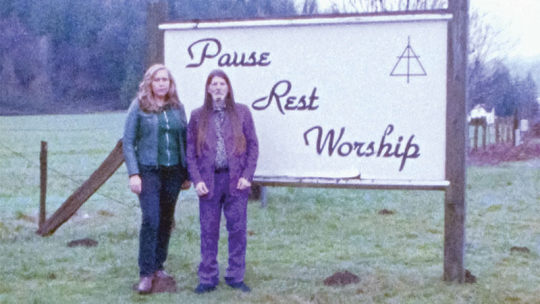
Un año más acudimos a la cita ineludible del otoño que es para nosotros In-Edit Festival. El certamen celebró del 26 de octubre al 5 de noviembre en Barcelona su XXI edición.
Estos han sido los documentales premiados:
Mejor documental musical internacional: Peter Doherty: Stranger In My Own Skin, de Katia De Vidas. Mención especial: Music For Black Pigeons, de Andreas Koefoed i Jørgen Leth. Mejor documental musical nacional: Revolutionary Quartet: l’enigma Gerhard, de Xavier Bosch i Josep Badell. Mención especial: Riqueni, de Paco Bech. Mejor cortometraje documental musical nacional: Dol i fa sol, de Maria Besora i Pep Garrido. Premio del Público Razzmatazz: Sempre Dharma, de Aleix Barba Perarnau.
Con el espectacular cartel de esta edición, no es de extrañar que hubiera varios sold-outs. Entre las más destacadas proyecciones, destacaban las protagonizadas por Syd Barret, The Zombies, Willy DeVille, Cyndi Lauper, Subotnik, J Dilla, Marc Bolan, C Tangana, Pete Doherty, el colectivo Hipgnosis y muchos más.
A continuación, nuestro TOP 4 de este año, sobre The Birthday Party, Earth, David Johansen y Fatboy Slim:
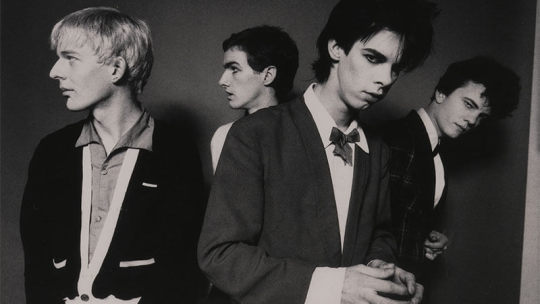
Teníamos muchas ganas de ver Mutiny in Heaven: The Birthday Party, de Ian White. Y las expectativas se cumplieron con creces. Unos jovencísimos Nick Cave y Mick Harvey, junto a sus compañeros Rowland S. Howard, Phill Calvert y Tracy Pew, eran una pandilla de inadaptados que trasladaron toda su rabia al escenario, despuntando rápidamente en su oriunda Australia. "La primera fila no es para los debiluchos", decía Nick Cave en uno de los shows de la banda. Razón no le faltaba. Sus directos eran explosivos y caóticos. Con fragmentos de entrevistas de los protagonistas, White construye un relato repleto de momentos irrepetibles. En Londres no acababan de cuajar y terminaron en Berlín. No sin antes liarla en sus giras por Estados Unidos o Europa. Droga, mucha droga, rivalidades y mil y un desencuentros son explicados con todo detalle, incluyendo unas animaciones muy logradas.
youtube
La razón por la que Even Hell Has Its Heroes. The Music of Earth, está en este top, además de porque nos encanta la banda, es por el elegante enfoque con el que el director, Clyde Petersen, encadena los testimonios de todos los músicos que en algún momento han pasado por la formación. Las grabaciones de diferentes emplazamientos del estado de Washington, como Olympia, Seattle o Aberdeen, el aspecto 1.33:1 del encuadre y la textura analógica de las imágenes trasladan al espectador al epicentro de la escena en la que surgió Earth en los primeros años 90. Dylan Carson ha estado respaldado de gran talento durante todos estos años. Hablan no solo los músicos, sino también los técnicos de sonido o discográficas que trabajaron con él. El fantasma de Kurt Cobain, amigo de Carson, está latente. El duelo por su pérdida y la historia difundida en su momento por algunos medios de que fue Dylan quien le consiguió el arma homicida, pesan como losas, como también su intermitente adicción a la heroína. Otro detalle interesante son las diferentes formas de rodar a los músicos que intervienen. Se presentan con sus instrumentos como una alegoría, o bien aparecen en su entorno cotidiano. Lo bueno es que el periplo de la banda todavía hoy continúa.
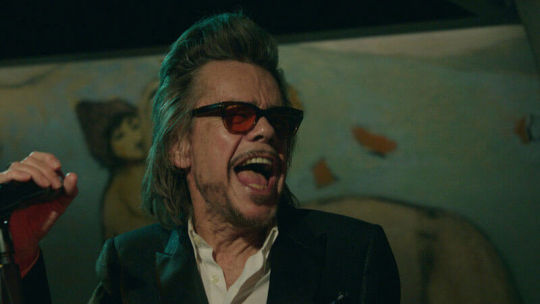
Un documental de Martin Scorsese no pasa desapercibido. El emblemático director, junto a David Tedeschi, es responsable de Personality Crisis: One Night Only. David Johansen, vocalista y único superviviente de los New York Dolls originales, ofrece un recital en el Café Carlyle de Nueva York en enero de 2020, la noche de su cumpleaños. Entre canción y canción se explica la historia de la banda. Johansen es un excelente contador de anécdotas. Un showman con muchas tablas que ameniza la velada para unos asistentes de lujo, entre los que se encuentran amigos y personalidades coetáneas como la mismísima Blondie. El setlist es exquisito, así como la selección de imágenes de archivo y fragmentos de entrevistas con Johansen en diferentes épocas.

Completa nuestra lista Fatboy Slim: Right Here, Right Now, de Jak Hutchcraft. El 13 de julio de 2002, Fatboy Slim y Midfield General presentaron en vivo el álbum Big Beach Boutique II en una mega rave gratuita en la playa de Brighton. Llegaron a congregar a 250.000 personas, cuando se esperaba que fueran unas 60.000. En este documental se narra lo acontecido aquel día, no sin antes dar buena cuenta de la trayectoria del legendario DJ y productor musical británico.
1 note
·
View note
Text
SLEDUJTE~ Indiana Jones a nástroj osudu (2023) Celý Film Online [CZ-SK] a Zdarma
Sledovat celý film Indiana Jones a nástroj osudu (2023) Online je aktuálně nejoblíbenějším filmem na vyhledávacím webu Google. Filmy, které jsou dnes velmi vyhledávané milovníky filmů, filmy, které je zábavné sledovat o víkendech s rodinou, přáteli a přítelkyněmi. Chcete-li se zbavit nudy, která se vám stane po únavě z práce.
Indiana Jones a nástroj osudu (2023) — Film Online Sledujte Indiana Jones a nástroj osudu (2023) filmy online. Můžete sledovat Indiana Jones a nástroj osudu film online v HD Quality!
: ► Klikněte zde pro shlédnutí filmu Indiana Jones a nástroj osudu- Online zdarma v HD
| DVD (Blu-ray) | 4K UHD | HD-2080p | HD-720p | SD-480p | MP4 |
Sledovat online : Indiana Jones a nástroj osudu (2023)
Stažení : Indiana Jones a nástroj osudu (2023)

Další název: Indiana Jones a nástroj osudu Žánr: Dobrodružný, Akční, Fantasy, Země: Spojené státy americké Premiéra v ČR: 2023-06-28 Délka: 155 min. hraje: Harrison Ford, Phoebe Waller-Bridge, Antonio Banderas, John Rhys-Davies, Toby Jones, Boyd Holbrook, Ethann Isidore, Mads Mikkelsen, Karen Allen, Shaunette Renée Wilson, Thomas Kretschmann, Olivier Richters, Martin McDougall, Alaa Safi, Francis Chapman, Alfonso Rosario Mandia, Chase Brown, Nasser Memarzia, Amedeo Bianchimano, Anna Francolini, Gabby Wong, Adolfo Margiotta, Niccolo Cancellieri, Antonio Iorio, Manuel Klein, Holly Lawton, Guy Paul, Harriet Slater, Alton Fitzgerald White, Ian Porter, Daniel Anderson, Cory Peterson, Charles Hagerty, Ali Saleh, Amara Khan, Jill Winternitz, Billy Postlethwaite, Clara Greco, Joe Gallina, Nicholas Bendall, Thulani Storm, Edoardo Strano, Angelo Spagnoletti, Hicham Ouaraqa, Adil Louchgui, David Mills, Rhyanna Alexander-Davis, Gary Fannin, Gunnar Cauthery, Aron von Andrian, Nikola Trifunovic, Henry Garrett, Elena Saurel, Mike Massa, Anthony Ingruber, Christian Sacha Mehja-Stokes, Angus Yellowlees, Matthew Staite, Corrado Invernizzi, Joerg Stadler, Thorston Manderlay, Basil Eidenbenz, Johann Heske, Joshua Broadstone, Bruce Lester-Johnson, Martin Sherman, Allon Sylvain, William Meredith, Kate Doherty, Duran Fulton Brown, Eliza Mae Kyffin, Mauro Cardinali, Mark Killeen, Bharat Doshi, Aïssam Bouali, Douglas Robson, Mohammed R. Kamel, Bryony Miller, Tiwa Lade, Brodie Husband, Hannah Onslow, Simon Kunz, Walter Cronkite, Obsah filmu Indiana Jones a nástroj osudu: V hlavní roli se představí Harrison Ford jako legendární hrdina a archeolog, režie se ujal James Mangold. Spolu s Fordem ve filmu hrají Phoebe Waller-Bridge, Antonio Banderas, John Rhys-Davies, Shaunette Renee Wilson, Thomas Kretschmann, Toby Jones, Boyd Holbrook, Oliver Richters, Isidore a Mads Mikkelsen. Film režíruje James Mangold a produkují ho Kathleen Kennedy, Frank Marshall a Simon Emanuel, výkonnými producenty jsou Steven Spielberg a George Lucas. Kroky ke stažení filmů * Můžete navštívit webové stránky prostřednictvím odkazů, které jsme poskytli následovně: povodeň * Navštivte stránky, které již doporučujeme a vyhledejte film, který chcete sledovat a stahovat. Pro zjednodušení můžete použít funkci vyhledávání. * Po nalezení filmu, který se vám líbí, klikněte na kartu Hry. Pokračujte v stahování hrozby „Indiana Jones a nástroj osudu“ a stáhněte film do požadované kvality. Viz obrázek, aby bylo jasnější. Klíčová slova Indiana Jones a nástroj osudu celý film zdarma ke shlédnutí, Indiana Jones a nástroj osudu cz dabing online ke shlednuti, Indiana Jones a nástroj osudu Filmy Česky a Zdarma, Indiana Jones a nástroj osudu online ke shlednuti, Indiana Jones a nástroj osudu Informace o filmu, Indiana Jones a nástroj osudu online cely film, Indiana Jones a nástroj osudu Sleduju Online, Indiana Jones a nástroj osudu online bombuj, Indiana Jones a nástroj osudu online, Indiana Jones a nástroj osudu online film cz, Indiana Jones a nástroj osudu Bombuj, Indiana Jones a nástroj osudu bombuj cz,
0 notes
Text

so cute so silly

bonus
9 notes
·
View notes
Photo
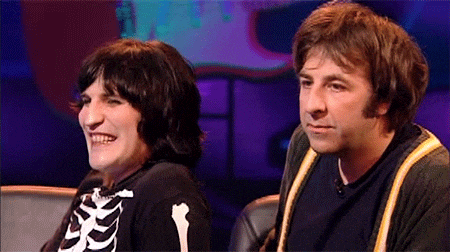
11 notes
·
View notes
Text
‘Our Flag Means Death’ Is the Ultimate Friends-to-Lovers Valentine’s Day Stream
There’s a special place in rom-com heaven for friends-to-lovers stories. Isn’t that what we all secretly want out of life: to not only love our partners but to like them as well? No two characters exemplify this particular trope better than Ed (Taika Waititi) and Stede (Rhys Darby) in Our Flag Means Death. When you think of TV friends becoming lovers, the usual suspects come to mind: Jim and Pam…
View On WordPress
0 notes
Text
youtube
Since entertainment is one of the most carefully regulated industries, it is no surprise that some of the most influential people in the world are forced to work with each other. But not everyone can be happy working with their colleagues, especially when they are former friends. Here are 5 celebrities who can't seem to get along.
Enjoyed this video? Hit the like button and subscribe to our channel for more videos like this! Thanks for watching!
#hollywood#movies#musicians#celebrities#tom hardy vs charlize theron#david o russell vs george clooney#david o russell george clooney beef#charlize theron#james franco tyrese gibson beef#tina fey paris hilton beef#celebrity#james franco vs tyrese gibson#tina fey vs paris hilton#kiefer sutherland vs freddie prinze jr#nicki minaj mariah carey beef#american idol#nicki minaj vs mariah carey#shannen doherty#shia labeouf vs alec baldwin#the rock#bill murry vs lucy liu#tom hardy#Youtube
0 notes
Text
Cult Faction Podcast Ep. 69: Mallrats
Cult Faction Podcast Ep. 69: Mallrats
This week the spotlight falls on Kevin Smith’s Mallrats! Join us as we discuss the movie and all the other things we have been watching… https://cultfaction.com/wp-content/uploads/2022/08/Episode-69.mp3
youtube
View On WordPress
#Ben Affleck#Brian O&039;Halloran#Bryan Johnson#Claire Forlani#David Klein#Ethan Suplee#Jason Lee#Jason Mewes#Jay#Jay and Silent Bob#Jeremy London#Joey Lauren Adams#Kevin Smith#Mallrats#Michael Rooker#Priscilla Barnes#Renée Humphrey#Shannen Doherty#Silent Bob#Stan Lee#Sven-Ole Thorsen#View Askew#View Askewniverse#Walter Flanagan#Youtube
0 notes
Photo

People, September 9th 1991
High School Confidential
By Tom Gliatto and Michael Alexander.
Photos by Mark Sennett.
Beverly Hills, 90210 Gets Its Heat from a Dangerously Cute Cast of TV's Hottest New Stars CONFIDENTIAL MEMO: FROM: The Vice Principal TO: The Faculty, High School U.S.A. I'm sure I don't need to remind you what happened when we didn't prepare for Bart Simpson last fall. The school was flooded with rude, antieducational T-shirts. Some cows were had. Well, as a new school year gets under way, I believe we face another daunting challenge: Brace yourselves for Beverly Hills, 90210. That's the Fox drama about unworldly twin teens Brandon and Brenda Walsh (played by Jason Priestley and Shannen Doherty), recent transferees from Minneapolis to the Hills of Beverly. There they struggle to assimilate into the fast-lane lifestyle of West Beverly Hills High School, where the kids come equipped with BMWs, call waiting and designer surfboards. In the process, the teens examine their emerging identities and the problems that adolescents everywhere face.
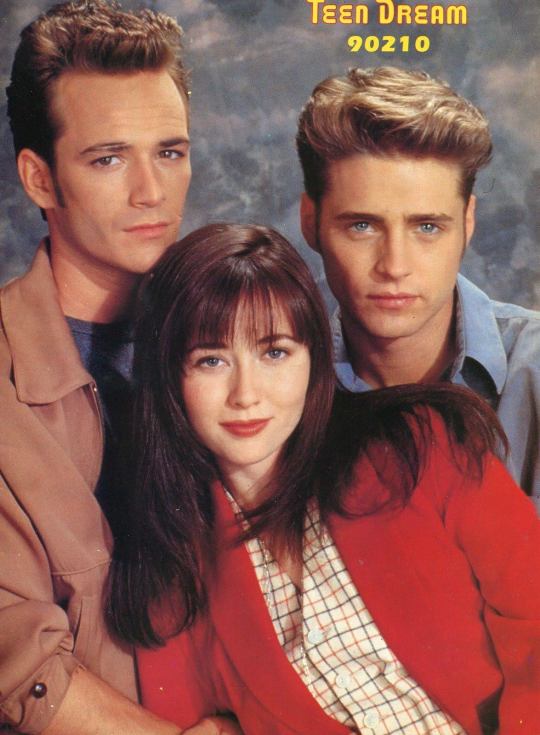
The show languished in the Nielsen ratings against Thursday powerhouse Cheers last year. But Fox had no replacement, so it stayed. While we were on summer vacation, new 90210 episodes began airing, and the show landed in the Top 20, becoming the most popular show among teenagers. To some extent, I take responsibility for having ignored 90210. I made the mistake of reading newspaper critics instead of my daughter's diary, and so I believed, as Howard Rosenberg sniffed in the Los Angeles Times, that the show was merely a "ZIP code for stereotypes and stock characters." Little did I know that this show would mesmerize teens by doing emotionally realistic shows that involved adolescent rebellion, alcoholic; parents, a breast-cancer scare and plenty of worrisome teen sex. "Most shows for adolescents," says 90210 creator Darren Star, "seem like they are written by 50-year-olds who think teenagers behave like 7-year-olds."
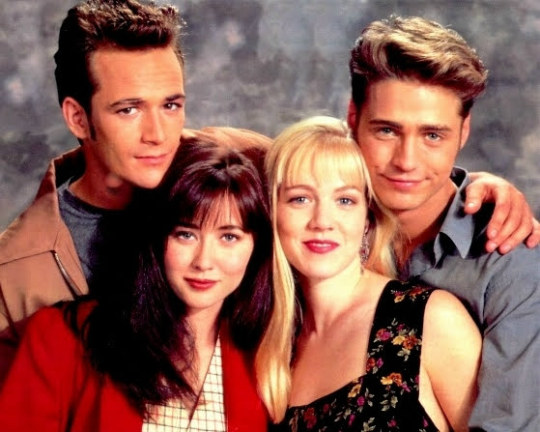
It also doesn't hurt that the show's male stars, Priestley and Luke Perry (who plays brooding loner Dylan McKay), are "to die for," as my daughter puts it. These two have each been receiving about 1,500 fan letters a week. So be vigilant: Surely some of these will be written by our students...during class! And I'm afraid that 90210 is only going to get bigger with our kids, if producer Aaron Spelling is to be believed. "I thought The Mod Squad and Charlie's Angels got a lot of publicity in their heyday," says Spelling, whose company produced those shows, "but it doesn't compare to this. It's crazy. We have merchandising coming out of our ears"—a complete line of T-shirts, beach towels, notebooks, etc. "And now these actors can't walk down the street!"
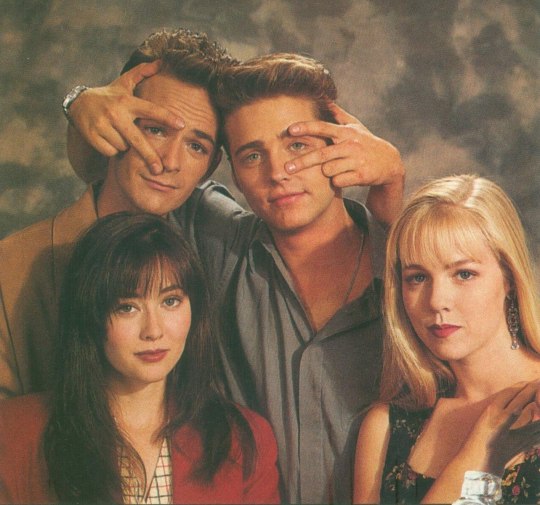
Or even streak through malls. You probably saw those alarming news reports about a frenzied mob of 10,000 fans that stampeded Perry when he appeared at a south Florida mall last month. "It's a little scary," says Perry. Scarier is the amount of time students will waste this fall discussing Luke. And Jason. And who is sexier. I provide some information on the two. Jason Priestley, 22, plays Brandon Walsh, a model of thoughtful level-headedness. In real life, however, the brown-haired, blue-eyed star, who started acting in commercials at age 4 and played an orphan on that very nice NBC sitcom Sister Kate, is no Oliver Twist. He likes dirt bikes, bungee jumping and is a chain-smoker (just about the whole cast puffs it up—but not on-camera). Vancouver-born Priestley likes to hang out in Las Vegas. As for his real romantic life, he was reportedly dating actress Robin (Doogie Howser, M.D.) Lively last spring, but it seems likely that now he is too busy for such dalliance;. He must be on the set 14 hours a day, five days a week. To avoid ever-present fans, Priestley says, "I look different from my character when I'm just walking around. I don't shave, I don't dress like Brandon."
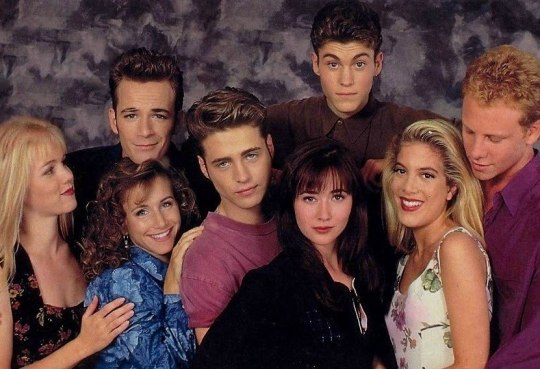
On the show, 26-year-old Luke Perry (Brenda Walsh's boyfriend, Dylan) sports a leather jacket, dagger sideburns and a squint that spells t-r-o-u-b-l-e. Although he grew up and graduated from high school in Fredericktown, Ohio, he seems to have attended James Dean wise-guy classes. Perry, who played country-boy Ned Bates on the ABC soap Loving, entertains the 90210 cast by strutting around bare-chested making jokes. Does he have a girlfriend? "No. You know how I can get in touch with Linda Hamilton?" What kind of music does he listen to? "Tom Jones is awesome." Are he and Priestley ever mistaken for each other? "He's mistaken for me on his good days." And 90210, he says, is "the best show on television, except for Jeopardy!" We should act quickly, faculty, when we see any signs that Beverly Hills, 90210 is disrupting normal student activity.

How abnormal might things get? Consider: "It's almost like there are cults," says Brian Austin Green, 18, the North Hollywood High grad who plays the cutely dweeby David Silver. "Girls go to school the day after the show, and they actually become these characters. They say, 'Okay, today I want to be Dylan, you can be Brenda, you can be Brandon.' " Needless to say, students caught pretending to be TV characters should be brought directly to my office for detention. But you know, it might not be a bad thing if our students could show some of the good sense that the 90210ers display in coping with the pressures of fame and fortune. Jennie Garth, 19, who plays the very sexy, very blond, very snotty Kelly Taylor, is particularly admirable. The youngest of seven children, she grew up on a farm near Champaign, Ill., until her schoolteacher parents moved to Phoenix when she was 13. "Living in a small town and coming from a very tight and close family instilled a lot of standards that I need to live up to," says Garth, who just bought a home in Sherman Oaks. She also recently supplied her parents with the down payment for their new home, setting a splendid example for today's youth.
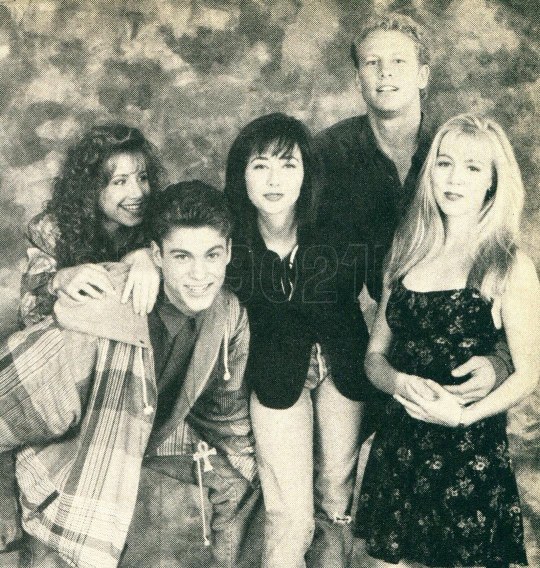
According to a tabloid that someone left in the faculty lounge, Memphis-raised Shannen Doherty, 20, a veteran of such wonderful shows as Little House: A New Beginning, is the only cast member to be accused of behaving like "a spoiled brat" on the set. But she maintains she is no such thing. "I think everybody gets in a bad mood," Shannen says. "You do not work 16-hour days and not start feeling it. But I have never thrown a tantrum. I've gotten upset on the set, but it's never been just to be a bitch. You have to stand up for yourself in this business. That was something I was told when I was 12 years old and working with Michael Landon."
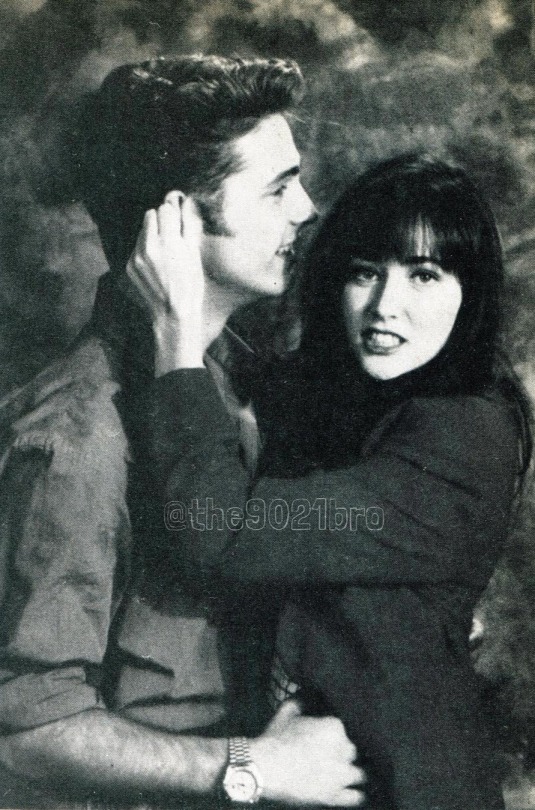
As with about half the cast members, Doherty is in a relationship—in her case, a real-estate developer with whom she's exchanged commitment rings. "You really have to date a while before you decide if this is the person you want to marry," she says with Brenda-like candor. Almost sounds like the relationship could be a future 90210 plot. "The problems of young people have accelerated," says Aaron Spelling, "and so have their feelings and thoughts." The show, he says, has kept pace: Even with their Clearasil-perfect complexions and plump allowances, the students at Beverly Hills have encountered their share of problems. "We had the guts to make Luke Perry be a member of AA," says Spelling. "We had Jason, our star, drinking and driving. That's reality."
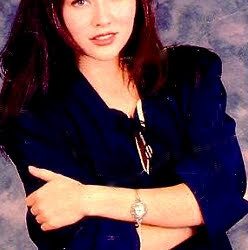
And, apparently, the adulatory fan mail often includes a sad dose of that reality. "I got a letter the other day from a girl who mentioned the show we did on parental drug abuse," says Perry in a rare moment of seriousness. "She wrote about catching her father freebasing in the basement. I get letters like that all the time, from people all over the country." Gabrielle Carteris (at age 30, she's 90210's oldest cast-kid), who plays Andrea Zuckerman, the bright student who comes from the wrong side of Rodeo Drive, remembers an encouraging close encounter in a grocery store. "One girl came up to me after we'd done the breast-cancer show," says Carteris. "She said, 'I went home with all my friends and we checked our breasts for lumps.' "
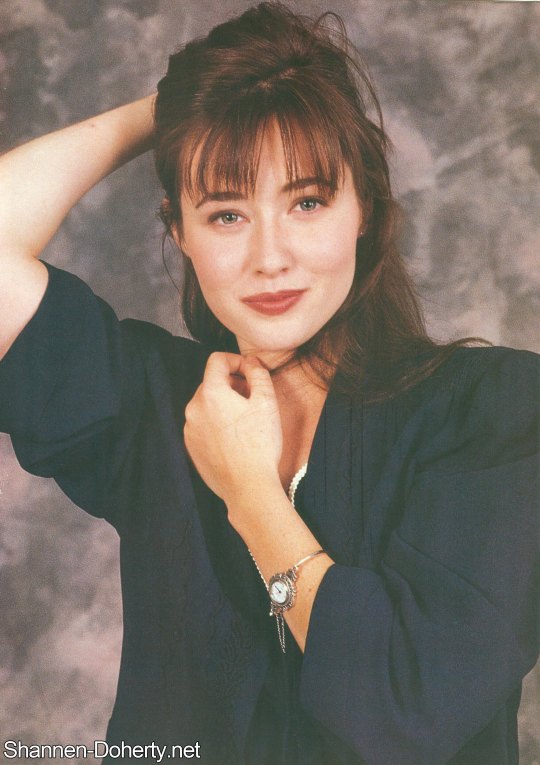
In conclusion: Maybe I didn't need to write this memo. Maybe things won't be that bad, even if every locker in every corridor has a picture of Jason, Luke, Shannen or Jennie in it. Perhaps our dear little school is more like West Beverly Hills High—at least the TV version—than I thought. That's what Ian Ziering, 27, thinks too. "The reality on the show pretty much mirrors the way life is all over, in terms of teenagers," says New Jersey—bred Ziering, who once did Fruit of the Loom underwear ads and now plays 90210's curly-headed jock, Steve Sanders. "There's a mystique about Beverly Hills. But that's not what keeps people tuning in. The show could have been Montana E-I-E-I-O." By the way, should any student pronounce his name "eee-an," correct him or her, please. It's "eye-an."
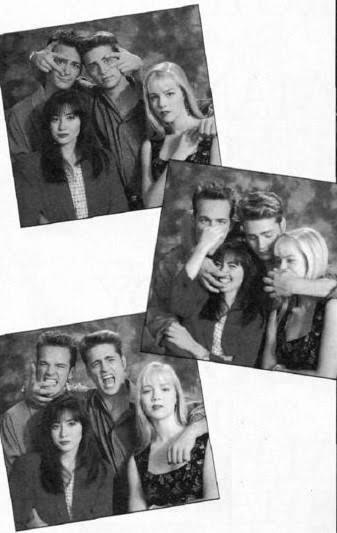
-- WHEN BEVERLY HILLS, 90210 PREMIERED last October, Highlights, the student newspaper at Beverly Hills High, ran articles mocking the school's TV counterpart, West Beverly Hills High. "They said that the show was a joke," says Jenny Brandt, 14, a sophomore at the 1,900-student school. But as the story lines improved and Jason Priestley and Luke Perry became stars, the jokes stopped, and Brandt found herself, like many of her pals, glued to the set on Thursday nights from 9 to 10 P.M. "No phone calls allowed," says Brandt. "Except during commercials." Hope Levy, a 17-year-old senior, has taken fandom a step further with her friends. "We have little handmade cards," she says, speaking from her mom's car phone. "They say you're a member of Club 90210." While some kids think the show treats them as snobby stereotypes, most agree with sophomore Jordan Rynes when he says, "It's like a soap opera for teens. The shows dealing with drinking and drugs are the most real—adults don't realize how accurate it is."
#1991 People Magazine#1991 shannen doherty#1991 Photoshots#1991 Mark Sennett#Mark Sennett#People September 9 1991#Beverly Hills 90210#1991 beverly hills 90210#acting career#quotes#Jason Priestley#Luke Perry#Jennie Garth#Tori Spelling#Ian Ziering#Gabrielle Carteris#Brian Austin Greene#1991#1990s#1991 article#1991 magazine#1990s Shannen Doherty#1990s article#1990s magazine cover#1990s photoshots#1991 magazine cover
20 notes
·
View notes